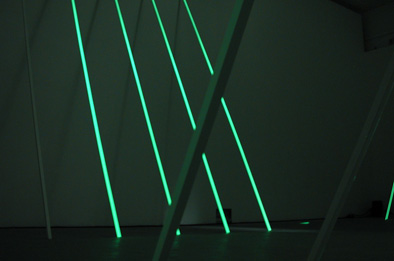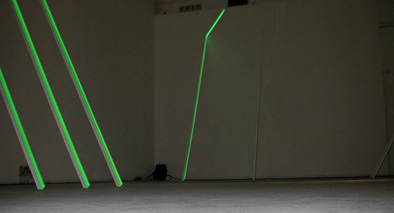From a mind specific Art to the Tangible world.
The following paper describe a set of experiments conducted between 2004 to 2006 in the Slade School of Fine Art as part of my Post Master Research.
A mind specific Art.
I use this term in order to describe an art piece that is completed only inside the participant’s head and can only be experienced inside the participant’s mind.
It is a unique form of art similar but quite different from a site specific art.
The project was realized with the support of The Slade Center for Electronic Media and also The Virtual Reality Lab at UCL and their use of mind tracking devices (EEGs).
In this project, I volunteered to be a subject in an experiment that examined the ability to control movement in a VR environment by using only basic patterns of thought. The outcome from this "Mind Specific Art" is the environment of a labyrinth that was designed using Maya Modelling and resulted in a maze of white light, made of both its actual and reflected manifestations, as seen on the inkjet prints.
Because of the intrusive nature of this experience I volunteered to be the subject. Playing the role of the laboratory mouse which was dropped into its own invented world of the maze. Being the inventor of this world put me in a superior position to the mouse though I was still the subject of the experiment.
During the process I have used non-permanent images such as reflections and projections of factual and fictional spaces in relation to orientation and also disorientation.
The integration of factual and fictional space was a main issue in this project.
All these are concerned with the lack of choice encapsulated in urban society. This lack is a reasonable outcome of the reduction and enclosure of private spaces in enormous metropolises.
Immediate subjects in this context would be the marking of private and public boundaries and territories.
The marking of boundaries was the starting point of this project since these have a specific visual form that are the result of accepted social codes. This is closely related to common fears such as that of trespassing and breaking and entering of property and violation of objects. It seems that the only line of retreat is one’s own mind. However as the speed of communications increases constantly the thought of direct none verbal ability to communicate is already a border that had been crossed by using technology such as EEG’s mind tracking devices similar to the one used in Labyrinth.
This fits perfectly with the paranoia of logging into one’s mind but at the same time it reflects the need for direct communication.
Labyrinth (2005) –
The work consists of an installation that deals with the basic notion of mapping a space and reduces this act into a one-millimeter wide structure of expanding rays of light, thereby creating a space where images of light and mirrored surfaces intervene.
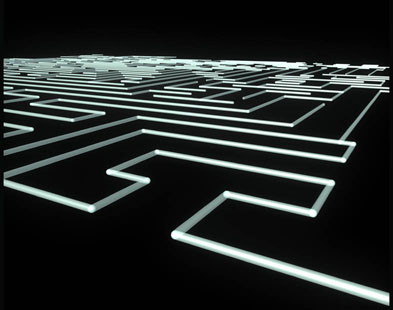
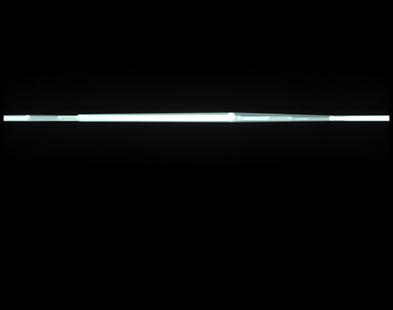
The first questions that this aroused were the ethical questions but as the experiment continued I started to investigate more of visual nature.
It was develop into three major works:
The first is Labyrinth as it looks from the location of the participant i.e. a line that encapsulates the entire labyrinth structure. It was realize in 2005 as a set of digital prints.
The second was split reality / a mapping of a space 2005. This project developed the idea further into a structure of glass and a composition of 1 millimeter lines of mirror.
Split Reality (Cover-Up a Project Space, London 2005) -
The idea of Split Reality plays on the parallel sight of glass surfaces, where the translucent material enables seeing both sides at once. The inability to place a trace, a mark or a scratch, to a certain side of a glass which one often comes across, is the factor which suggested the ability to use both surfaces in the works on display. This transition between the physical evidence of some kind of a trace into the semi illusionistic nature of its precise location is what allowed me to recognize the possibility of placement either on or under the glass and became a significant aspect in realizing this exhibition. This has continued further beyond its physical manifestation and into the field of the abstract experience of sight and vision.
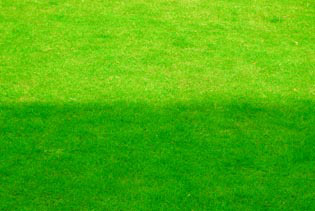
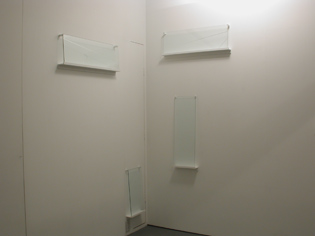
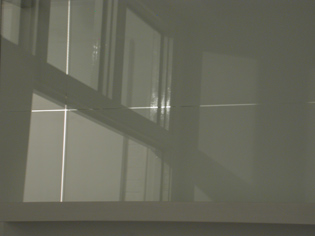
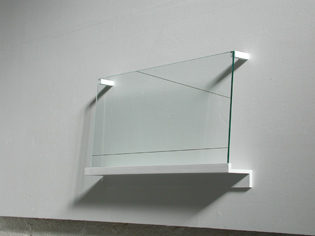
Sight stretches beyond interior limited spaces, where it tends to be blocked by opaque surfaces such as walls. In this case in particular, the calculated blueprint for the exhibition does not predict how exactly reflections, rays of light, and thin mirroring surfaces will present their non-material based visuals, within an enclosed space.
The precise measurements of a one millimeter width reflective line runs across the gallery, wide enough to reflect light, but not the reflection of clearly identified imagery. These thin lines seemingly coincide but only in the viewers mind as in reality these lines run in parallel on the surfaces of the glass. Their coincidence suggests numerous vanishing points through the actual space, clearly referring to the deceptive nature of perspective.
The light and darkness in the space are all components of the work, revealing something of the endless visual possibilities encapsulated in this specific site.
The promise of all these works has a low key presence, verging on the lack of substance, drawing some fine lines, exposing vantage points, revealing the usually unseen factors of the viewing process, while obscuring materialistic stances. The attempts to concentrate the visual into vision through sight processes requires the actual physical experience of the viewer. This is done with minimum material presence in order to avoid diversion into any specific object oriented experience.
Division and multiplicity both play considerable roles in the process of crossing vantage points that split and divide. However in doing so they also enhance the given gallery space.
The third part that concludes this project was realized through Node.London 2006 as part of Framed and it analyzed the perception of a three dimensional space in different viewing conditions.
Lost.Net (FRAMED Part of NODE.London 2006)
I started to draw lines through a given space, allowing the lines to pass through transparent glass surfaces. The glass causes changes such as breaks and diversions of the lines. The entire process is parallel to the construction of sight and vision. I am seeking the moment of viewing. During the very basic act of looking, the lines, like rays of light, pass through the space and are captured by the mechanism of the eye of any viewer in the moment when light enables vision. It marks visual references to the points of transformations of light into electrical transmissions that enable visibility but which are in fact invisible.
The idea of the act of seeing does not refer to the abstract but to the physical although invisible phenomenon. Actualizing the lines of beams of light, or very thin reflecting surfaces, relate to the reflective act of seeing. These are sculptural tools that I now use in my work. The materials I mentioned are in fact basic to any projection. I am not looking for mechanical objects that imitate natural processes, nor illusions or deceptions. I think that in anything that we tend to consider as truth exists a certain amount of deception.
